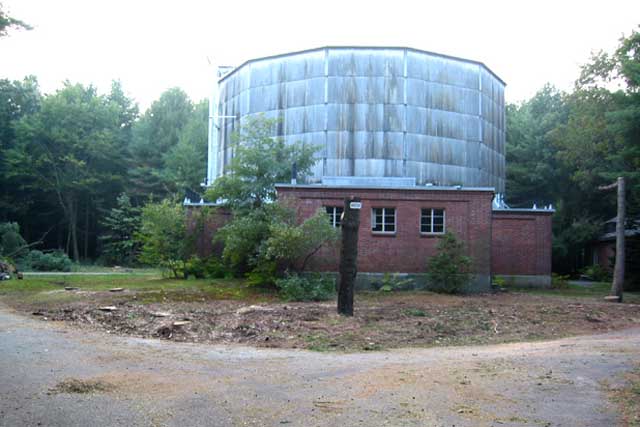Summer Has Sprung
July 25 -- our grass runneth over!! Yikes, need to MOW it??!
(That's Jason, exultant that the seed he sowed last fall actually
did something)
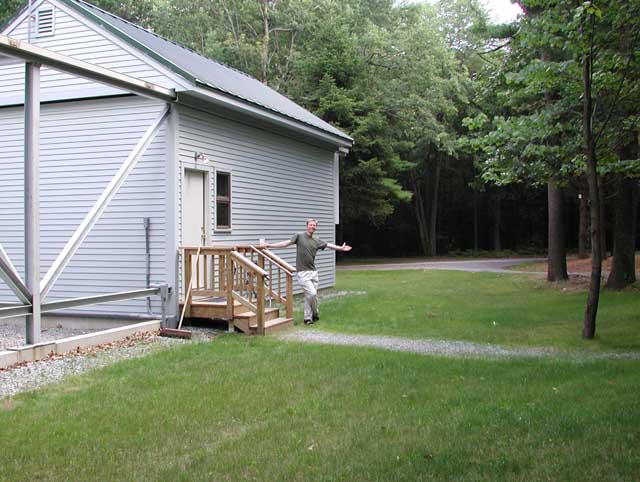
Drive System Now Complete
Here's a shot of the fully rebuilt drive system, with the drive arc
firmly secured with lots of solid aluminum hexagon stock bolted to a
thick aluminum plate. The stepping motor assembly is now attached in
the saddle between steel tubular uprights, spring-loaded against the
arc. You can see the array of mercury limit switches, and the aluminized
(gold-ized?) ripstop nylon telescope shroud. The "home switch" is barely
visible over on the righthand angular brace; see next picture...
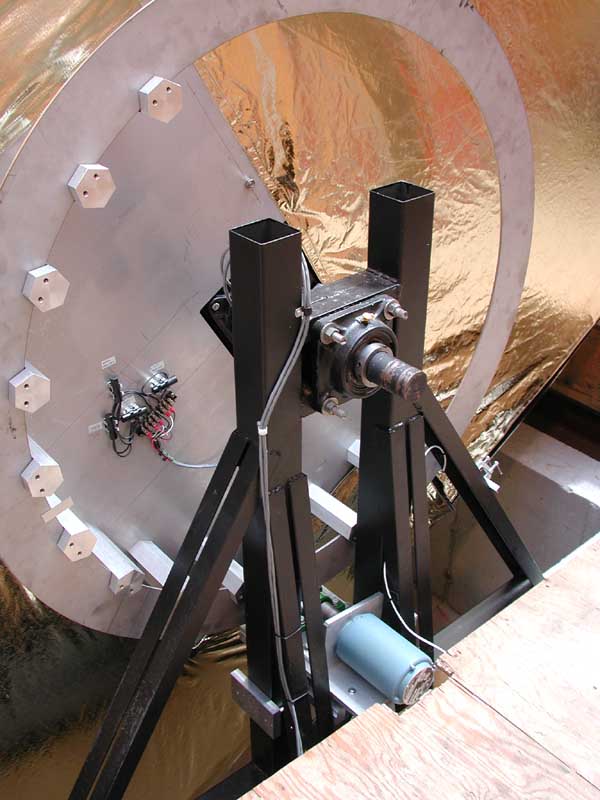
Home Switch
In this shot you can see the home switch (aluminum cross-bar with little
circuit at the right end, near bottom of nearest support), actually a
wide-gap optical interrupter, built by Jason. The stepper controller
knows what to do: it moves to the home position, then re-seeks it at lower
speed to ensure accurate alignment. From there we just count steps -- no
need for a fancy angular resolver.
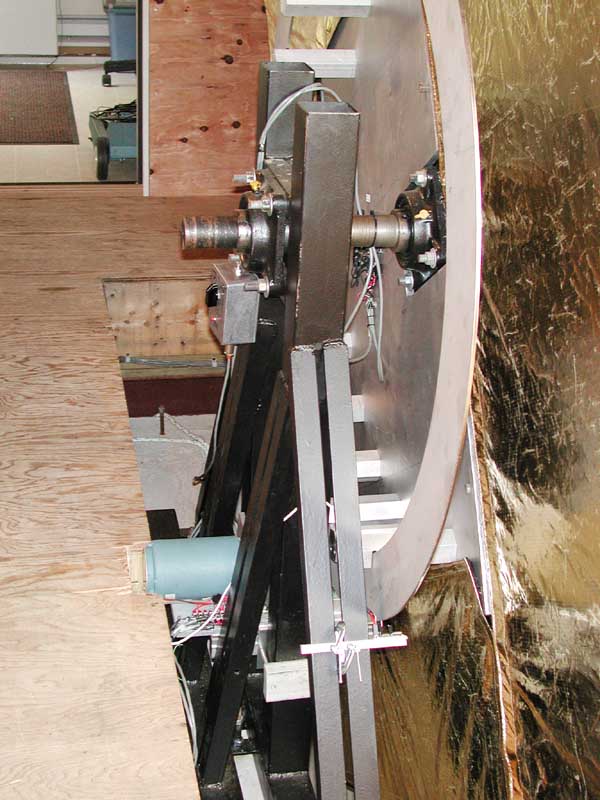
Checking Image Quality
Here's Alan's ever-creative solution to checking (and optimizing) image
quality -- a sensitive video camera staring at a groundglass in the
focal plane. The stripe of tape sets the scale. Next is to add a
sidereal tracking drive on the camera, to take out star motion. Then
we'll crawl down under the primary and adjust the cell alignment. If
that is too difficult on real stars, we'll put a source and ronchi
up on a boom attached to the movable roof, along with the camera, and
do a ronchi test and alignment. Whatever. We had lots of fun watching
stars move, grandly, across the groundglass the other night.
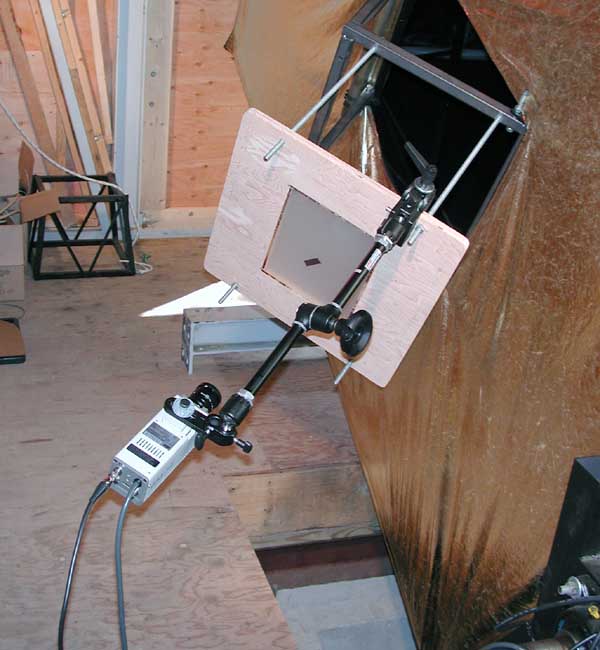
Cookin' the Primary
Condensation can be a real problem, for example when a humid front comes
in after colder weather. You get steamed-up mirrors, dripping walls in
the dome, etc. Our solution (we hope it's a solution) is to elevate the
temperature of the optics (for the mirror condensation problem), and to
install some large radiant heat panels in the dome (for the everything-else
problem). Here's our heater system behind the primary, an array of 48
40W power resistors; with a variac and isolation transformer we can dump
up to 2kW into it. Preliminary measurements by Robert Stefanik suggest
that 500W produces roughly a 2-degree centigrade elevation of the glass
over ambient.
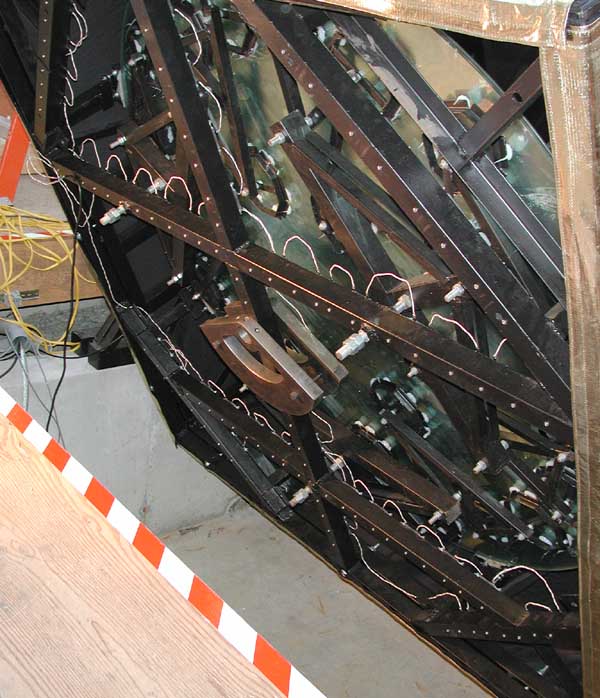
Cookin' the Secondary
Here's the secondary heater; for this we used a 20-foot length of heater
tubing (1/4" copper, 10 watts per foot). The heater warms the steel
tubular support, producing a 2 degree centigrade elevation of the glass
at about 100 watts.
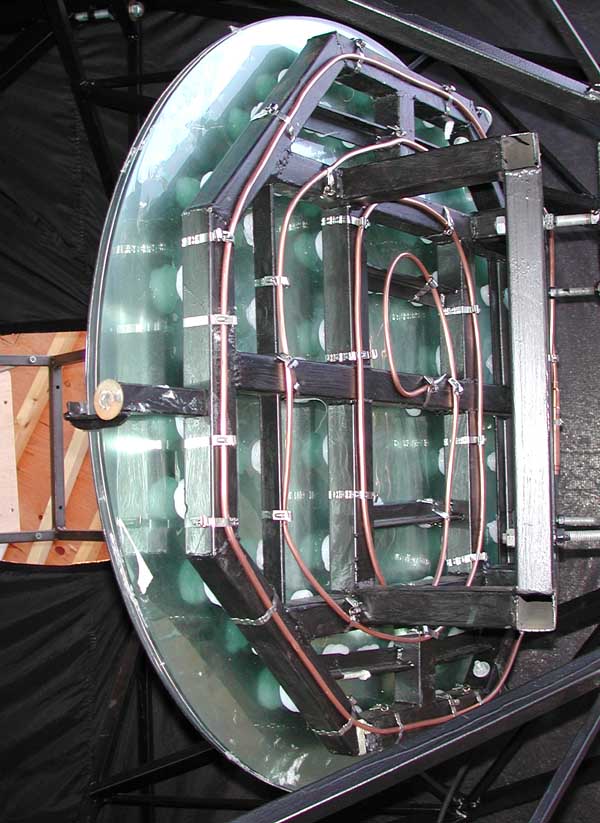
Big Brother
It's a remotely operated observatory, so we need to know for sure when the
roof is fully open or closed, telescope elevated, etc. Here's one of the
several videocams we've installed, a weatherproof B/W camera, with several
arrays of IR LED's for nighttime illumination. This one is at the
southeast corner of the dome, near the roofline. Jason Gallichio has cooked
up a webcam server to go with them. We won't publish the url.
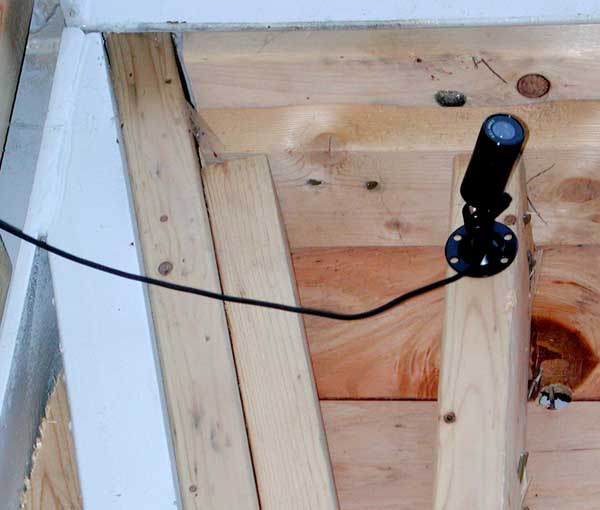
Trees-Be-Gone
October 6, 2002: A beautiful day, with Jason and David performing some
soldering work alfresco. You can see the 61" dome pretty clearly, because
of some serious tree-cutting that went on the week before (see next).
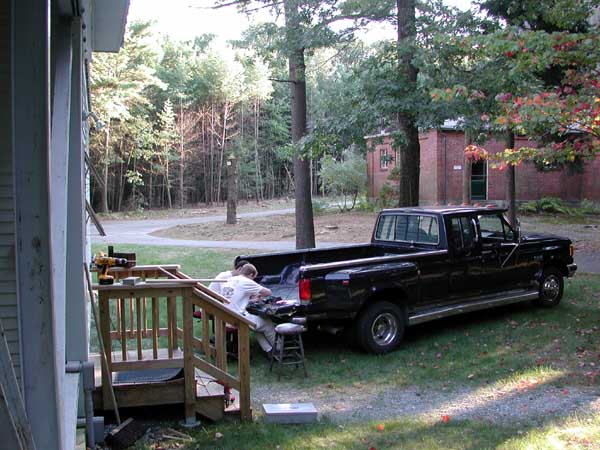
Having a Tree for Lunch (I)
"Giant Claw Annihilates My Backyard, Terrified Homeowner Reports"
(National Enquirer headline, 5 Oct 02)
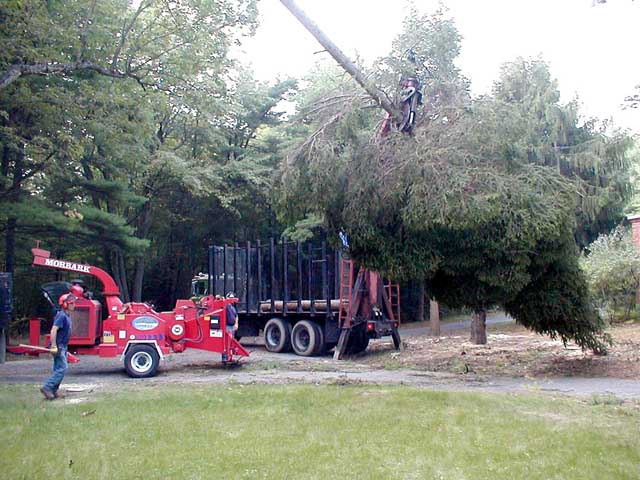
Having a Tree for Lunch (II)
Into the chipper, you pesky sky-blocking conifer!
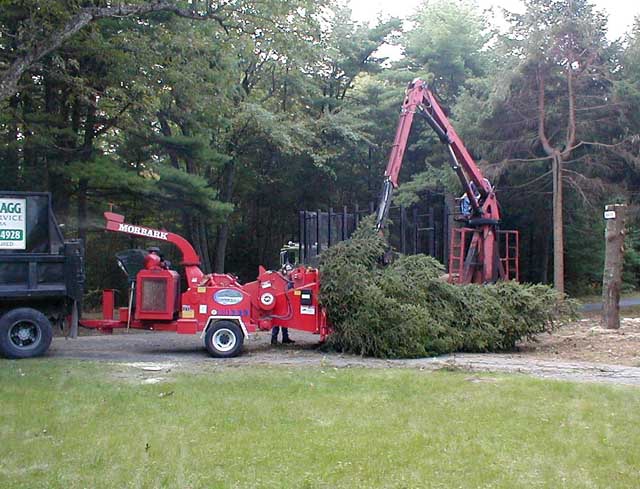
Clearcut City
(the title says it all)
